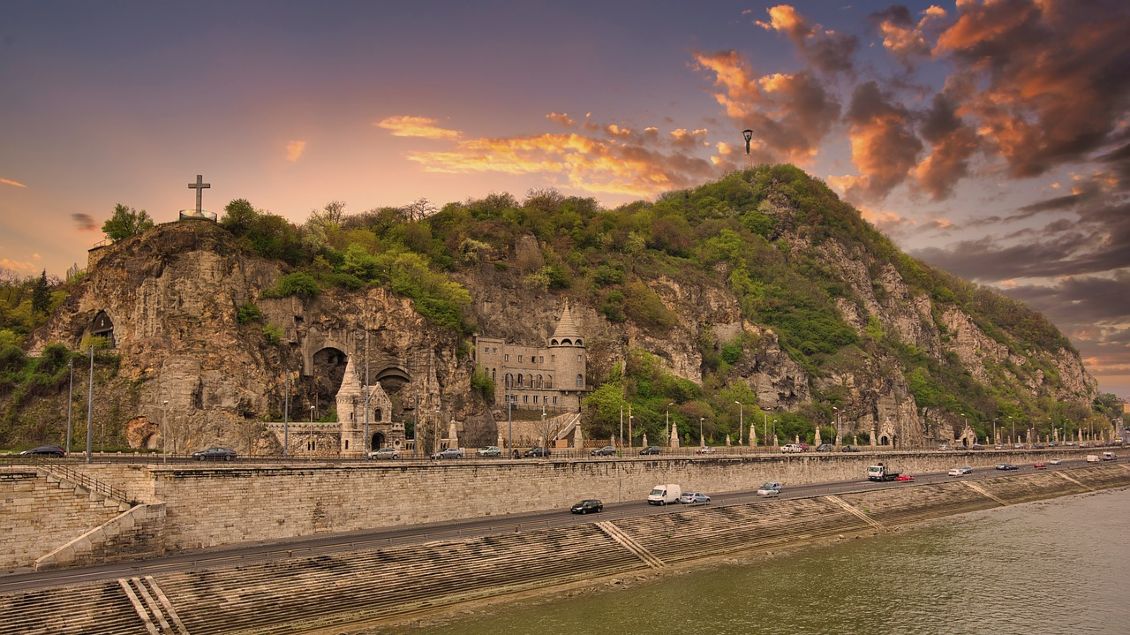Religious Sights
CAVE CHURCH

Cave Church is literally built into the karst rocks and caves of the Gellert Hill. The church was founded in 1926. It was named Saint Ivan’s Cave after a hermit monk who lived there and was said to have healed many people. The church is not a historical monument but a still functioning church of the Hungarian Paulite Order. The admission fee includes a 7-8 minute long movie about the history of the church and audio guide.
DOHÁNY STREET SYNAGOGUE

Found at the traditional entrance to the Jewish Quarter is the Dohány Street Synagogue, the largest of such buildings in Europe and the second largest in the world. The spectacular synagogue is a popular tourist destination but at the same time it is an important historical memento as well: Dohány Street marked the border of the Ghetto during World War II. There are 1,497 seats for men downstairs and 1,472 for women in the galleries, altogether the seating capacity of the 53 metres long and 26 metres tall building is nearly 3,000 people. The two domed towers are 44 metres tall each. A complementary building in the same style, called the Heroes' Temple, was built next to the synagogue in 1931. It commemorates the Hungarian Jewish victims of World War II. It is also the location of the Jewish Museum which presents an exhibition on the celebrations, traditions, relics of Judaism and about the Holocaust and the Ghetto in Hungary. In Raoul Wallenberg Memorial Park we can see the Holocaust memorial named The Tree of Life. It is also the place of the cemetery for those who perished in the Ghetto.
MATTHIAS CHURCH

The Church of Our Lady, better known as Matthias Church looks back on an exceptionally long history and is the second best known church of Budapest after St. Stephen's Basilica. It was built in 1015, shortly after the country's conversion to the Christian faith. Thanks to its latest reconstruction between 2006-2013, it now stands in its old glory again. The building is a great example of Central-European Gothic style. Its facade is adorned with rich ornamentation, sculptures and reliefs. The interior is dominated by wood, gold and painted walls. Since summer 2015, the first time in the building's history, the Bell Tower can be visited by anyone. 197 steps lead up to the 47 metres high balcony but for the breathtaking panorama these are steps definitely worth taking.
STEPHEN’S BASILICA

The St. Stephen’s Basilica, named after the first Hungarian king, is the most important religious centre in Hungary. With its 96 metres height, it is the third largest building in Hungary. It has a floorspace of 4,147 m2 a length of 86 metres, a width of 55 metres, its towers are 80 metres tall each, the inner height of the dome is 65 metres and the interior can hold up to 8,000 people. The Basilica is the official home of the mummified Holy Right Hand of St. Stephen. The Treasury houses an exhibition where visitors can see items from the long construction of the building, a piece of embroidery by Empress Elisabeth of Austria and the complete bequest of Archbishop József Mindszenty.





